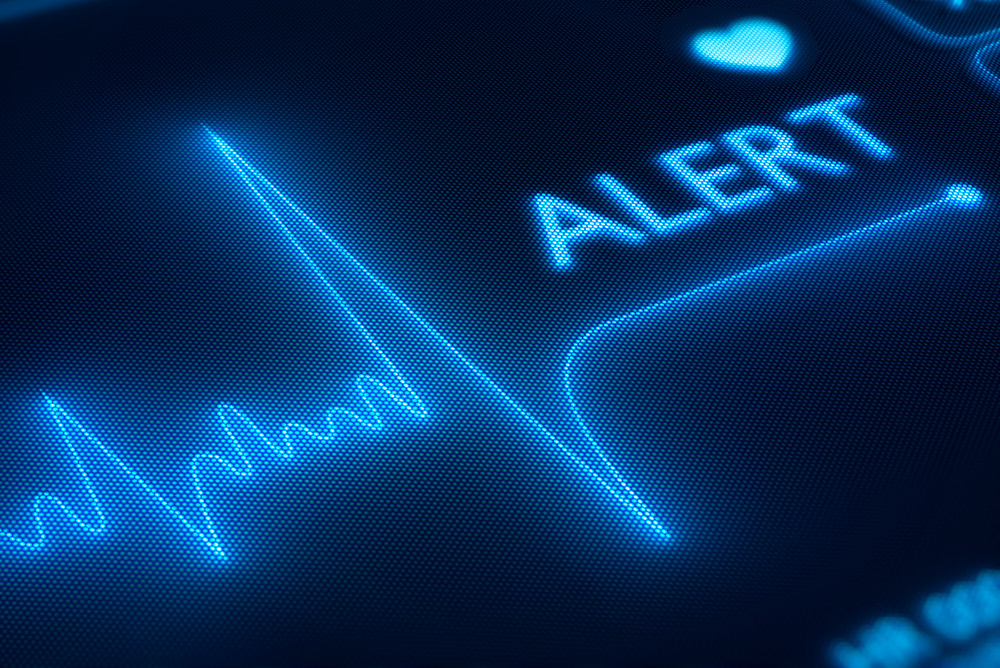
iStock
DOES YOUR HEART go pitter patter when you’re mad as a hatter? Although “mad” in this song (“Alice in Wonderland” by Neil Sedaka) refers to madly in love, mad anger can seriously impact the heart. In a 2014 data analysis of nine studies, within two hours after an anger eruption, the incidence of acute coronary syndrome — anything from chest pain and shortness of breath to heart attack or stroke — was found to be five times higher than at other times. According to the analysis, published in the European Heart Journal and reported by the Washington Post, as anger increased from moderate to furious, so did the risk of a heart incident.
Also during those two hours, the chance of an ischemic stroke (rupture of a weakened blood vessel in the brain) was four times as great. Called brain aneurysm, these weakened blood vessels develop most often between ages 40 to 60 and more commonly among women. They usually cause no symptoms but, with increased blood pressure, can balloon out and rupture. If detected early, brain aneurysms are often treated with medications such as blood thinners and clot busters.
Heartbeats are controlled by electrical signals traveling through the heart to make it squeeze and pump blood. The average human heart beats about 100,000 times per day, pumping over 2,000 gallons of blood, and women’s hearts beat faster than men’s by about eight beats a minute.
If your heart rate feels speedy, do a quick pulse check using two fingers at the wrist or base of the neck next to the windpipe. Normal range is less than100 beats/minute, based on counting for 15 seconds and then multiplying by four, but your heart beats faster during exercise or under pressure. Even tachycardia, increased regular heart rate, rarely has a serious cause in the absence of other symptoms.
A heartbeat that is very fast — 80 to 100 beats per minute — or irregular, called atrial fibrillation (AFib), can be the result of damage to the heart, high blood pressure, inflammation and sometimes no perceptible cause. AFib warrants a visit to the doctor and in severe cases is treated with an implanted cardiac defibrillator. In the 2014 analysis, within 15 minutes of an outburst, defibrillators detected an arrhythmia and shocked these individuals’ hearts back into regular rhythm.
A fluttering sensation in the chest is the most common sign of AFib, a feeling that your heart is beating too fast or hard. A rapid heart rate is most worrisome when it occurs with other symptoms such as chest pain, shortness of breath and feeling dizzy or faint. Besides exercise and anxiety, common flutter generators are fever, dehydration, overactive thyroid (hyperthyroidism), binge drinking, diabetes and sleep apnea.
The risk of AFib increases with age, in particular over 60, and with a family history of AFib. When the heart isn’t pumping normally, blood can pool in the upper chambers of the heart and form clots that can travel to the brain. Untreated AFib increases the chances of a stroke by five to seven times.
Electrical shock, performed under sedation, is often the first treatment for AFib. Called electrical conversion, small quick pulses of electrical current reset the heart rhythms. Other remedies include medications as well as surgical procedures that destroy excess heart tissue or create scars in the heart that redirect the electrical current.
Heart failure occurs when a weakened heart struggles to pump enough blood to meet the body’s needs and eventually becomes unable to keep up. The kidneys respond by causing the body to retain water, which can build up in the extremities, the lungs and other organs, leading to congestive heart failure. Coronary artery disease occurs when the arteries supplying blood and oxygen to the heart become blocked, and cardiomyopathy is damage to the heart muscle caused by blood flow problems infections, and alcohol and drug abuse.
“Ideal cardiovascular health” can be achieved via seven “ideal behaviors,” as defined by an American Heart Association committee of experts: no smoking; maintaining a body mass index below 25; being physically active; following current dietary guidelines; and maintaining an untreated total cholesterol of less than 200 milligrams, untreated blood pressure of less than 120 over 80 and a fasting blood glucose level of less than 100 mg, Jane Brody wrote in her August 2016 New York Times column titled “Rediscovering the Kitchen for Heart Health.” Physical exercise should include a minimum of 150 minutes a week of moderate or 75 minutes a week of vigorous activity.
The column’s kitchen rediscovery focus is based on committee recommendations that emphasize food, rather than nutrients or calories, and suggest a version of the DASH (Dietary Approaches to Stop Hypertension) diet: daily minimums of four and a half cups of fruits and vegetables, and three ounces of whole grains; and weekly, two or more 3.5 ounce servings of fish, and four or more servings of nuts, legumes and seeds. The diet also limits weekly consumption of meat, sugar-sweetened drinks, saturated fats and sodium.
Because the 2014 analysis linking heart incidents to anger didn’t investigate other risk factors such as diet, behavior and family history, it didn’t prove a direct cause and effect relationship. On the other hand, the analysis found that both holding anger in and letting it out can have both positive or negative health consequences, and made the point that “People who regularly experience excessive anger are often urged to consider anger management or therapy sessions to learn to control outbursts.”
— Mary Carpenter
Mary Carpenter is MyLittleBird’s Well-Being editor. Read more about Mary here. She recently wrote about the MIND diet.

